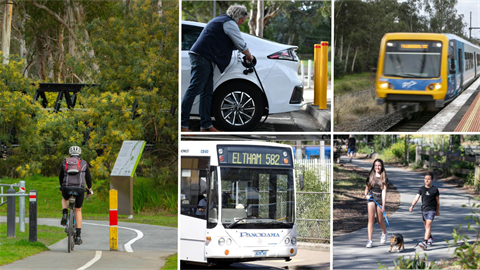
Transport is central to our daily lives; connecting us to work, education, healthcare, shopping, leisure and social activities.
In Nillumbik, with its unique topography, abundance of space, townships and villages, we’re presented with complex transport needs, and our future transport choices can directly impact the liveability of our Shire and contribute to our efforts in addressing climate change.
Council is developing an Integrated Transport Strategy, to guide transport planning and advocacy in Nillumbik over the next five years.
The Integrated Transport Strategy will provide a strategic framework that will guide Council to promote more sustainable transport outcomes, reflecting Council’s declaration of a ‘Climate Emergency’ and our Climate Action Plan 2022-2032.
To assist with development of the Integrated Transport Strategy, an Issues and Options Paper has been developed to assess multiple areas of transportation within Nillumbik.
Four objectives have been identified to guide Council’s delivery of the Integrated Transport Strategy. These are:
- Enable emerging sustainable transport
- Plan and deliver active transport networks that are safe, accessible, connected, comfortable and inclusive
- Advocate and encourage public transport by enhancing its accessibility, safety, convenience, and attractiveness
- Encourage land use planning that supports safe and sustainable transport outcomes
Council is seeking community input to inform development of the strategy, which will be used to help plan for future transport networks across the Shire. The strategy will cover all types of transport including, walking, cycling, e-scooters and bikes, public transport and motor and electric vehicles.
Nillumbik Deputy Mayor Karen Egan said the strategy would outline the types of actions under Council’s control, as well as the advocacy efforts required to address issues under the State Government’s remit.
“This important strategy will focus on developing an integrated transport system, providing reliable and accessible transport for people to move freely around and through Nillumbik,” Cr Egan said.
“It will consider ways we can refocus the network towards more sustainable, public and active modes of transport over the long term, while also highlighting opportunities for us to advocate for changes to issues that are the state government’s responsibility.
The Shire’s local road and footpath network and a significant portion of its cycling network, such as the Diamond Creek Trail are overseen by Council. The Department of Transport and Planning, oversees planning and management of the arterial road network, strategic cycling corridors and public transport.
Nillumbik also works closely with neighbouring municipalities including Murrindindi, Yarra Ranges, Banyule, Whittlesea and Manningham, recognising the importance of the broader road network.
To read the Issues and Options Paper, find out about our pop-up sessions and to provide your feedback go to






